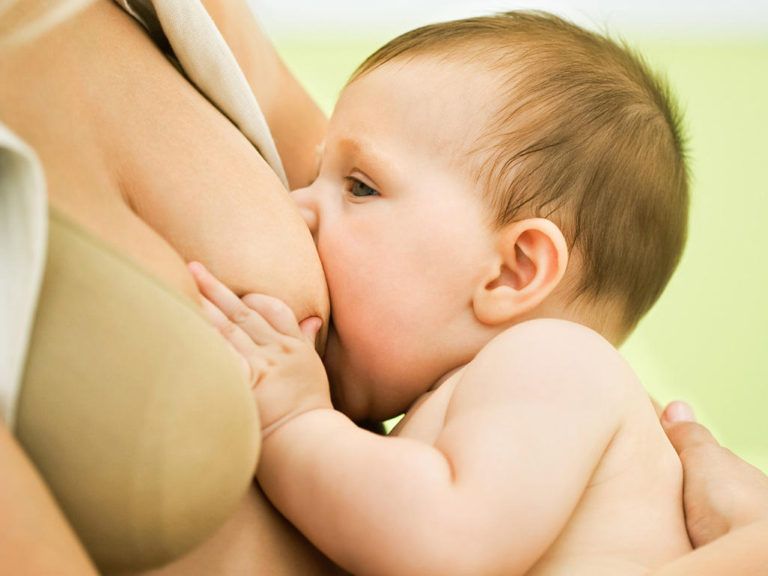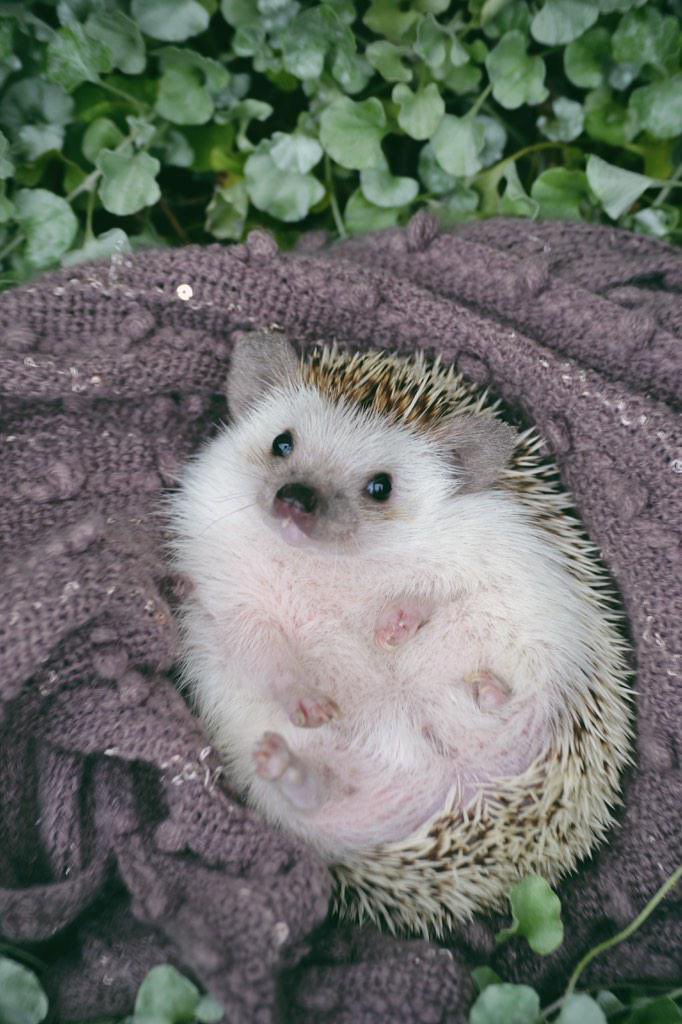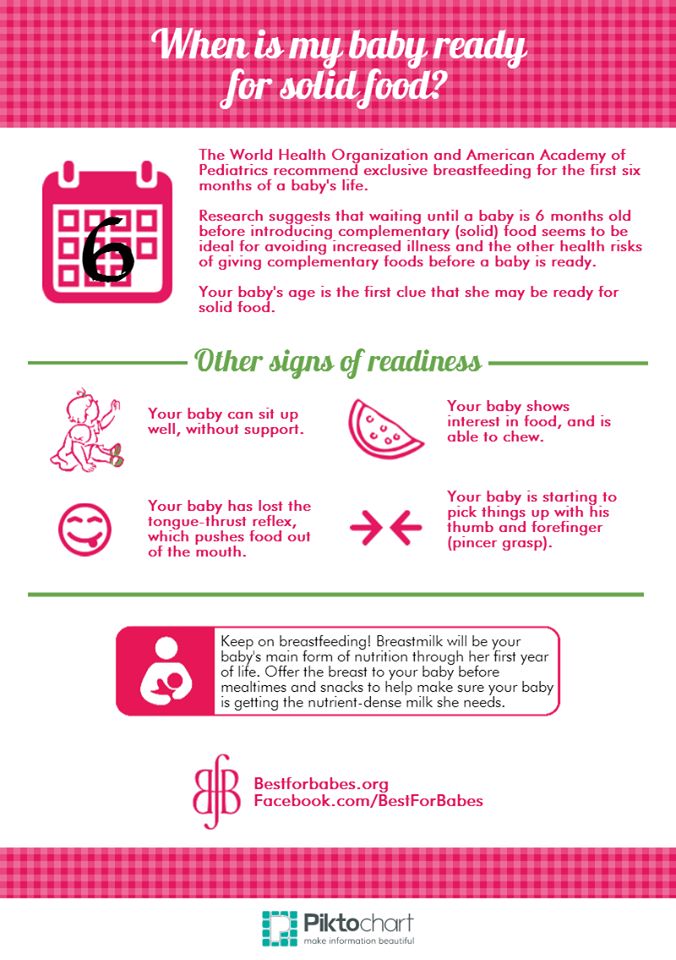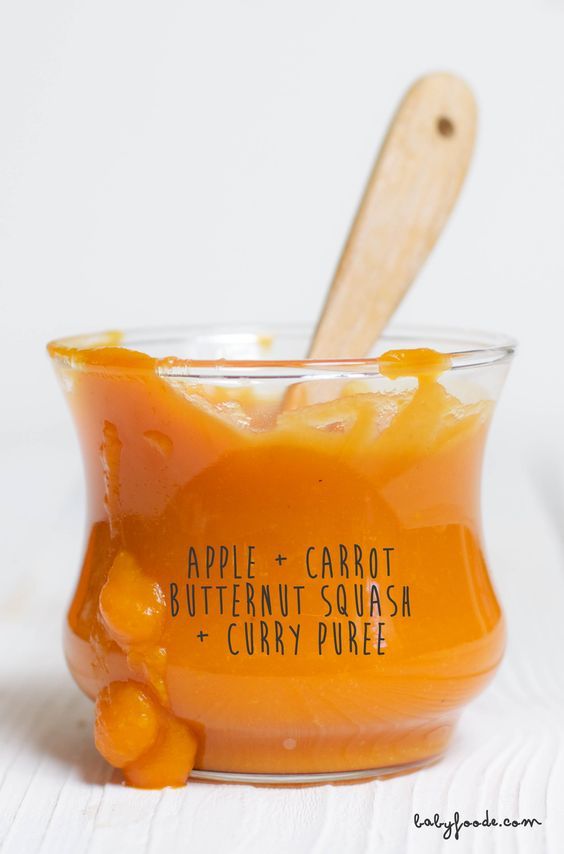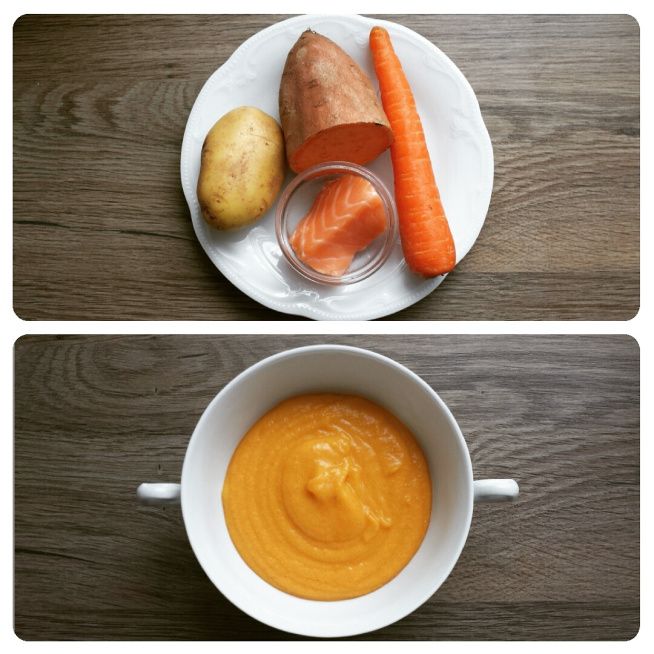What to feed orphaned baby ducks
How to Care for Wild Baby Ducks: A Complete Guide
Note:
This article on how to care for wild baby ducks pertains to wild Mallard ducklings only. Domestic breeds of duck require different types of care.
There is information on feeding domestic ducklings here.
Mallard ducklings are more likely to be found in the first 24 hours after hatch as the mother may have to lead them a fair way to water resulting in a few getting left behind. During the first week, out of a clutch of 12, she is likely to lose most of them. Most mallard mums will end up with 2-4 ducklings surviving to adulthood.
Although ducklings get straight onto the water after they have hatched, they will have already benefited from being waterproofed by their mother. Ducklings with no mother have to work much harder to waterproof themselves. You, therefore, need to exercise caution regarding any water they may be able to enter. A waterlogged duckling can drown or die from hypothermia surprisingly fast.
The first 24 hours
After they have hatched, the ducklings survive for 24 hours on the yolk sac they have absorbed just before hatching. Consequently, they may not be interested in eating or drinking during the first few hours after rescue. They do, however, need to be kept dry and warm until they are ready to eat.
Rearing
If you can’t get your duckling(s) to an experienced person, keep them in a medium-sized, high sided box, with a hot water bottle under a towel at one end.
They will benefit from somewhere to snuggle where they can keep warm – a furry hat with ear flaps, placed over a covered hot water bottle is ideal, but do make sure they can get away from the hot water bottle if they want to. A duckling can also suffer from overheating as well as being cold. Don’t leave the duckling(s) in direct sunlight, behind a window with no shade or ventilation.
Occasionally, ducklings may benefit from being kept close to your body to keep warm if you can’t get them set up properly when they are first rescued.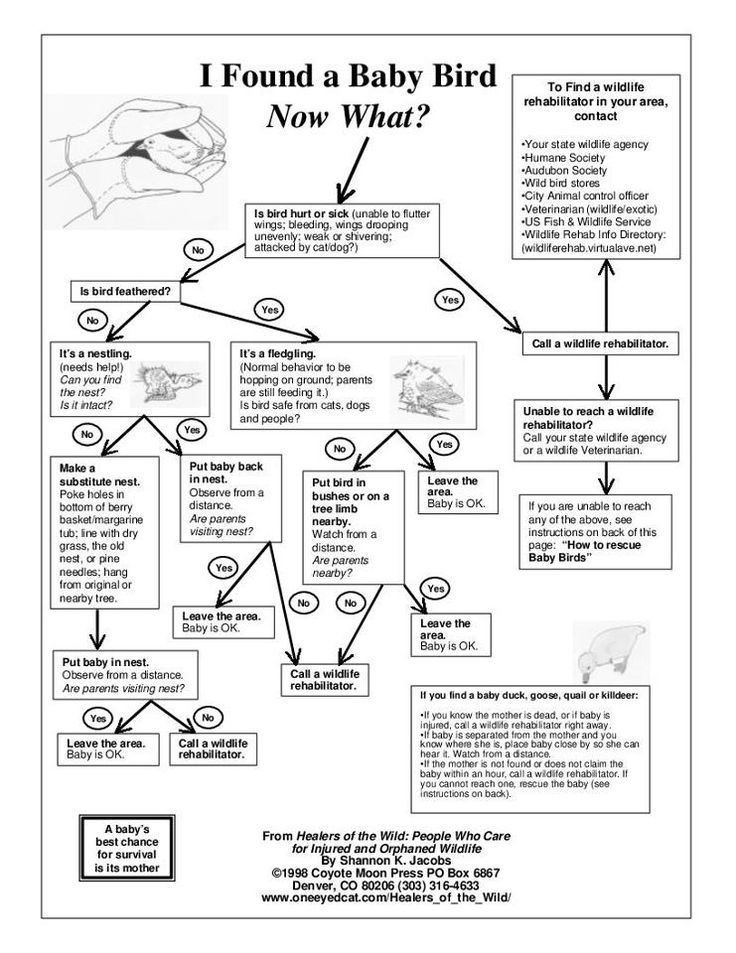 If the duckling is wet, use a soft towel/cloth, and dry until its down is fluffy again.
If the duckling is wet, use a soft towel/cloth, and dry until its down is fluffy again.
Bedding
You can use a towel, or puppy pads to line the box. Don’t use newspaper as this causes the ducklings to slip and their legs are delicate. Also, avoid straw at this age and never use hay, as it can harbour mould spores, which can be extremely harmful to ducks.
Routine
Try not to leave the ducklings unattended for more than 2-3 hours at a time. Nigh time is an exception but they will be up when it is light.
During daylight hours ducklings will have a routine of eating and drinking then preening then snoozing on an hourly basis (approximately)
If the duckling needs first aid, a solution of sugar water can be offered from a dropper into the end of its beak or in the nook/well of your thumb and forefinger. Do not syringe feed a duckling you may get liquid in its airway.
Feeding
For food, offer a jam jar lid with a small amount of hard boiled egg or crushed dried mealworms, crumbled with chopped oats.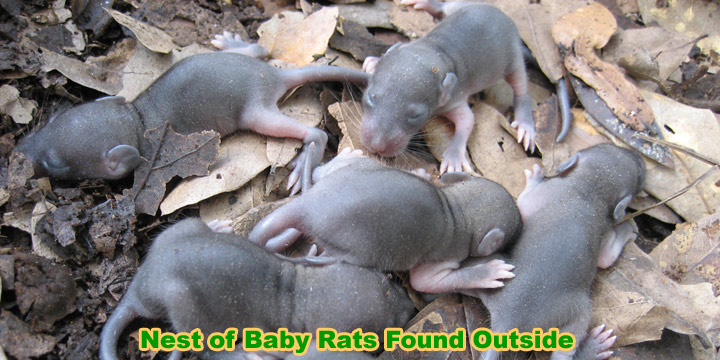 Also provide a shallow dish of water filled with pebbles. The pebbles protect against the duckling getting into the water where it could get waterlogged, or even drown. Never offer food without water.
Also provide a shallow dish of water filled with pebbles. The pebbles protect against the duckling getting into the water where it could get waterlogged, or even drown. Never offer food without water.
Handling
Don’t hold a duckling too tightly. Ducks have a complex respiratory system and have air sacs all around their body. Holding them too tight can cause breathing difficulties and even suffocation. Try to hold your hand gently around them, making sure there is always room for them to move around a little bit inside your hands. They are also quite bouncy so be prepared for them to try and jump out of boxes/hands etc. onto the floor!
Injuries
If your duckling appears to be injured or has been attacked by a cat or dog please get it to a vet as soon as possible. Ducklings often have leg sprains that are recoverable, however, a duckling with a broken leg will not survive in the wild. Puncture wounds from cats can cause bacterial infections, which can kill a duckling within 48 hours.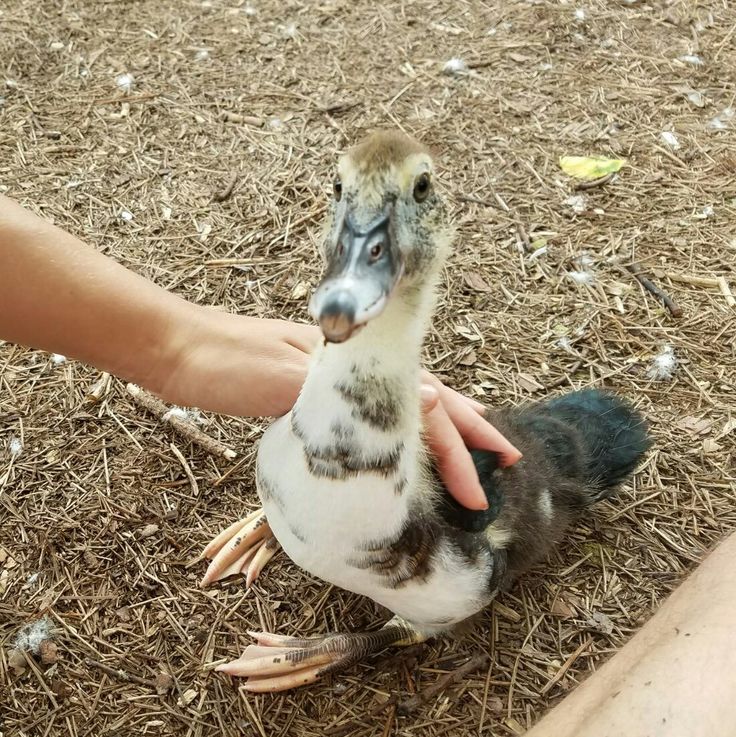 If you can see a puncture wound on the duckling please point this out to the vet. Please note that ducks have holes for ears that shouldn’t be confused for puncture wounds.
If you can see a puncture wound on the duckling please point this out to the vet. Please note that ducks have holes for ears that shouldn’t be confused for puncture wounds.
If the duckling has been found in long grass check it for ticks. Ticks can be debilitating and need to be removed as soon as possible. They are usually located on the head and around the eyes. Please seek professional help to remove ticks if you are not fully comfortable removing them with tweezers.
This care regime can be used for 2-3 days. If you have the ducklings for a longer period, the following care will need to be put into place.
Feeding Mallard Ducklings
3 days to 5 weeks
From day old to 3 weeks feed starter crumbs formulated for ducks. Starter crumbs for chickens can sometimes be harmful to ducklings because they contain medication (coccidiostats). Ducks have different vitamin and mineral requirements so if possible choose a feed formulated for ducks.
Examples of starter crumbs suitable for ducks are:
From 3-4 weeks change over to duck and goose growers pellets, mixing the pellets in with the crumbs over about 10 days phasing out the starter crumb. Do not feed the starter crumb at all after 4-5 weeks old, as the protein content is too high.
Do not feed the starter crumb at all after 4-5 weeks old, as the protein content is too high.
Tip: Angel Wing
Too much protein after 4-5 Weeks of age is thought to cause the wings to develop too quickly which may result in a condition called angel wing. A wild duck with angel wing will not be able to fly, and would be unlikely to survive in the wild.
A duck with Angel Wing5-9 weeks
From 5-9 weeks add in some whole wheat until they are happy with whole wheat scattered on the ground, as they near release time.
From a few days old ducklings must learn to forage for food. Provide shallow dishes of pondweed/water from rivers and streams. There will be tiny crustaceans and bugs in this water, which they will forage for. Supplement the insect life with a few crushed, dried mealworms sprinkled in the weed. Clods of turf served in water will also encourage natural feeding behaviour.
Prepare for the ducklings to make a considerable mess with this feeding, but do encourage it, as it will be vital for their future survival. Use mealworms sparingly, especially after 5 weeks of age, as they are extremely high in protein.
Use mealworms sparingly, especially after 5 weeks of age, as they are extremely high in protein.
Finely shredded romaine or round lettuce and watercress should be fed if natural greens cannot be provided.
Tip: Leg Weakness
If ducklings are showing leg weakness or a reluctance to walk properly then you can sprinkle a pinch of dried brewers yeast powder on their food for a few weeks as a supplement. Brewers yeast is rich in B vitamins that ducklings need. You can buy Brewers Yeast online or in health food shops.
Natural sunlight (not through windows) is vital for vitamin D synthesis and good bone development. Try and let the ducklings forage outside on grass from as early and long as possible if the weather is warm enough.
Water Sources
Drinking water must always be available. If you have one or two ducklings a shallow dish with pebbles will suffice as long as it isn’t left to go dry. Ducklings not only drink but ‘use’ a great deal of water and will get through a small dish very fast.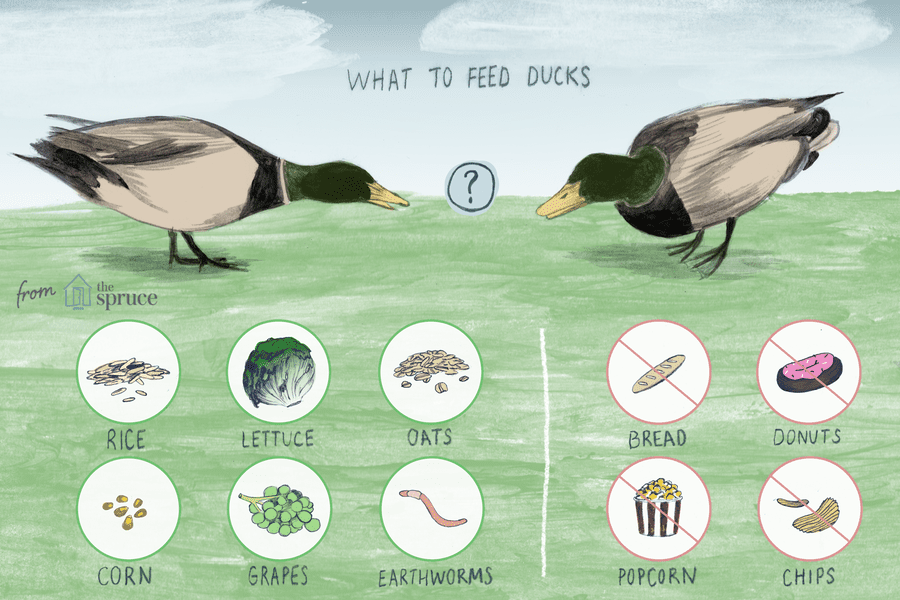
For more than two, provide a proper drinker.
Putting the drinker on a plastic tray will help to stop wet bedding. Ducklings must have an area available, which remains dry.
Water is essential and must always be available. Never offer ducklings food without water.
Temperature
How to care for wild baby ducks when there is no mum to keep them warm? Well ducklings can’t regulate their own body temperature until they have feathers. You need to control their environmental temperature to ensure they don’t get too hot or too cold. Unless ducklings are outside in the sunshine with no wind chill, you will need to provide supplementary heat for the first 1-3 weeks. Ideally they need a brooder, that’s adjusted as they grow. You can also use an electric heat source or lamp.
The Brinsea EcoGlow Brooder is ideal for ducklings. The small version will be OK for up to 5-6 ducklings, the larger one if you have more. Heat lamps are also useful but need hanging from the ceiling so are not as convenient.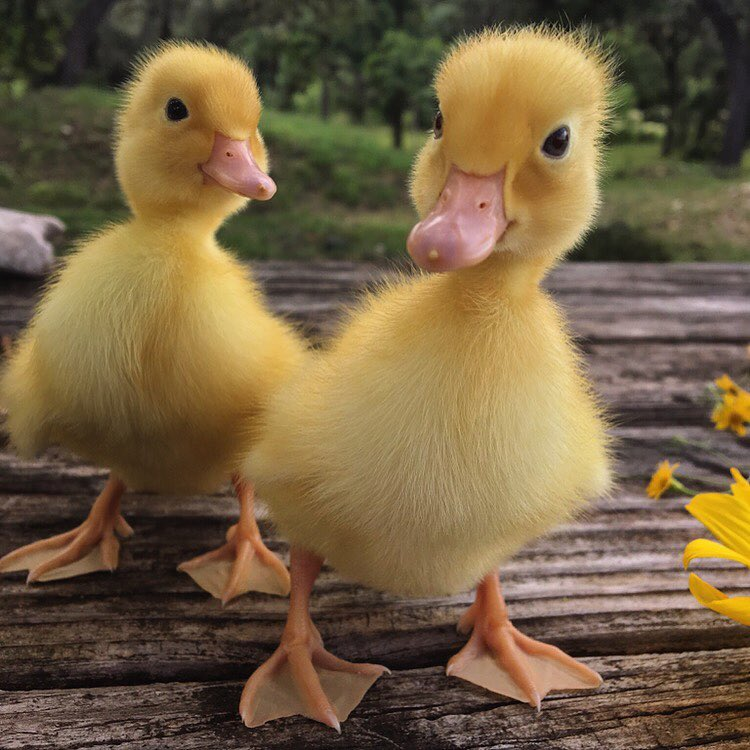 Floor standing brooders are also much safer.
Floor standing brooders are also much safer.
Heating while outdoors
If your ducklings are outside unsupervised for more than an hour, and are under 3 weeks old it is vital to provide them with a heat source in a dry area. Do NOT let them get wet and cold at this age.
Adjust brooders and heat lamps to the correct height as the ducklings get older. Always provide enough space for them to decide where they want to be. As a general rule, if they are huddling they are too cold, if they are panting and spread out they are too hot. Take note of their behaviour and you can adjust the temperature.
After 4-5 weeks they should not need a heat source unless you are in a particularly cold environment.
Bedding
When indoors, disposable puppy pads or towels are best. Change bedding at least daily. As ducklings get older (4-5 weeks) use chopped straw, dust free wood shavings or hemp style bedding. Never use newspaper or hay and always check that ducklings are not ingesting wood shavings or hemp if you choose this bedding.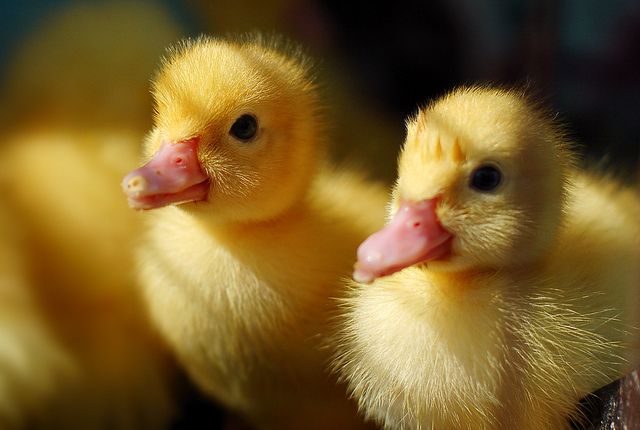 Outside time is vital and ducks should be on short grass. Avoid concrete if possible.
Outside time is vital and ducks should be on short grass. Avoid concrete if possible.
Indoor enclosures
For the first 2-3 days keep ducklings indoors. They need an area that they can move around in comfortably, where they can move between their drinker/food and their dry warm area.
Depending on how many ducklings you have, the area should be between 3ft x 3ft (up to 4 ducklings) to 6ft x 3ft (up to 12 ducklings). You can either buy brooder panels or you can make a high sided enclosure with stiff cardboard.
After 2-3 days they will enjoy having time outdoors. As already mentioned in the temperature section, they will need to be warm and protected from predators (ground and aerial). They must also be enclosed, so they cannot escape.
Outdoor enclosures
A 6ft by 6ft aviary is an ideal enclosure for two to six 2-3 week old ducklings. After that they will need more space, from 2-3 weeks old they will enjoy an enclosure at least 8ft by 18ft. Enclosures can be made from the fine gauge plastic garden fencing that can found in stores like B&Q and garden netting can go over the top of the enclosure to protect from birds of prey or corvids and seagulls.
Enclosures can be made from the fine gauge plastic garden fencing that can found in stores like B&Q and garden netting can go over the top of the enclosure to protect from birds of prey or corvids and seagulls.
Tip: Outdoor Enclosure
The outdoor enclosure needs to have space for a drinker, food dish, brooder, bathing facilities and a shallow dish of weed.
It must offer protection from wind and have a covered area to provide shade as well as protection from rain.
From 3 weeks old, wild baby ducklings can have larger gauge netting such as plastic coated chicken wire. In the UK they are less vulnerable from corvids and gulls once they reach this age, but a mesh roof may be necessary if you live in an area with birds of prey present.
Even with all these precautions it is always best to check on the ducklings at least every half hour, even in good weather. If they cannot be checked with this frequency, it is safer to bring them into their indoor enclosure.
Electric brooders can be put outside and plugged into a garden extension reel providing you take the necessary steps to stop them getting wet. Shade is essential if the weather is hot.
Provision of bathing water
It is sensible to supervise ducklings up to 1-2 weeks old (or until you can see they are waterproof i.e. stay fluffy) when swimming. It is VITAL that they have an exit ramp that they can use to get out of the water.
Ducklings prefer a shallow incline to enter and exit water. Water should not be too deep. During the first week supervised bathing in the sink or bath is acceptable. Watch them at all times when bathing and let them bathe up to 5 times a day. Towel dry them then leave to preen in a warm place. Bathing and preening encourages them to use their oil gland, which will waterproof them.
Paint trays
Paint trays make excellent bathing facilities. The smaller trays for the first week and the larger ones until the ducklings are big enough to have a small pond or tub. They may need a step up into the paint tray as they can be high off the ground.
They may need a step up into the paint tray as they can be high off the ground.
Strips of carpet are great for using as exit ramps in ponds. Stone pond liner as shown in the image below is ideal but can be expensive.
When ducklings reach 4-5 weeks, provide them with bathing facilities big enough to swim and dive and flap around in. This helps develop their wing muscles for flying. (They will still need an exit ramp).
Social requirements and imprinting
Will the duck know it is a duck?
Imprinting in ducks is a complex subject. There are two types of imprinting: Filial and Sexual. Simply put, filial imprinting will determine what species the duckling will see as a mother figure or who to follow. This type of imprinting occurs at hatch.
Sexual imprinting
Sexual imprinting determines what the duck sees as a mating partner. This develops over a much longer period, as the duckling develops into adulthood. Generally if you have a wild mallard duckling, the first thing it would have seen when hatched, is its mother and other ducklings. It should therefore imprint on ducks, and always know it is a duck. Even if you raise that duckling with only human company for the first few weeks of its life, it should still integrate with other ducks when reunited with its own kind.
It should therefore imprint on ducks, and always know it is a duck. Even if you raise that duckling with only human company for the first few weeks of its life, it should still integrate with other ducks when reunited with its own kind.
Tip: Single Ducklings
It is often the case that you find a single duckling. Place it with other ducklings as soon as possible, but if that's not possible, it can be raised on its own. Always provide a single duckling with a mirror and cuddly toy and try to avoid leaving it alone during the day.
In these circumstances, it is better to keep it with you as it needs company, ducks are flock animals and generally don’t feel secure on their own. Never release a single duckling socialising it with other ducks first. You need to seek specialist advice if you have a single mallard that has grown to adulthood with only human company.
Humanisation
Humanisation is different. Avoid letting the duckling become used to dogs and cats.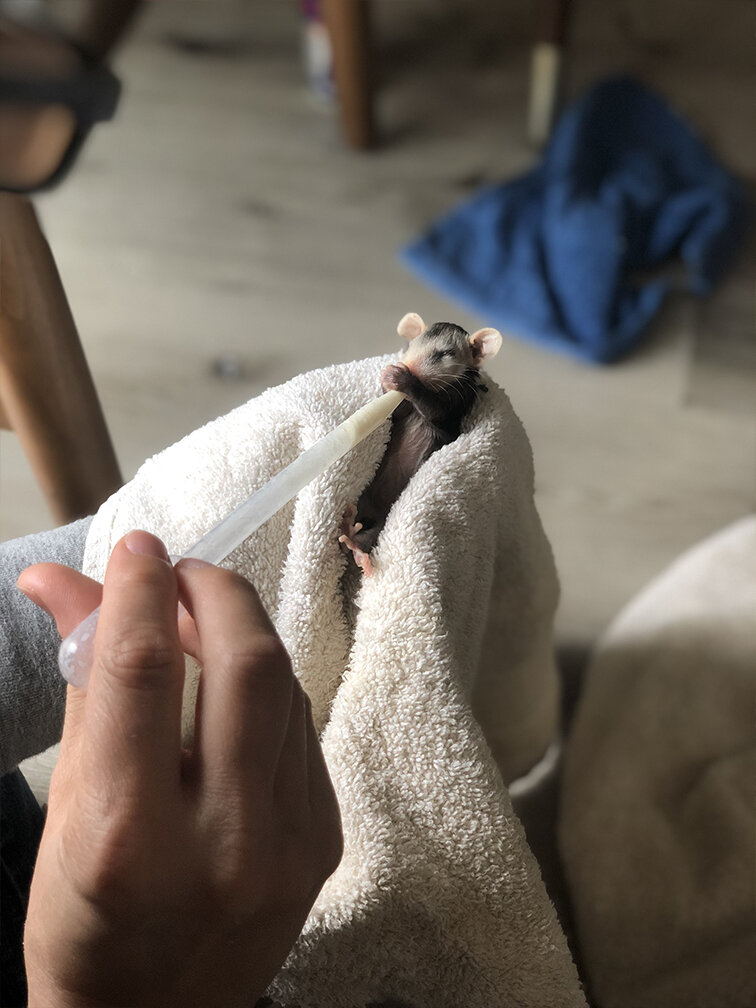 It will lose its fear of them, and will be more susceptible to predation when it is older. Additionally, try not to hand feed and cuddle the ducklings as they get older. They will associate humans with food and this may affect how well they can find food in the wild.
It will lose its fear of them, and will be more susceptible to predation when it is older. Additionally, try not to hand feed and cuddle the ducklings as they get older. They will associate humans with food and this may affect how well they can find food in the wild.
Release
If the location of the water source where the rescue took place is known, it is always ideal to release ducklings back to where they were found. This is easy if they have been found at a local park with a pond or a quay etc. However, much of the time ducklings are found in built up areas, or places far from a pond or river.
If you cant release back to their original pond then you must ensure they are released somewhere with water where there are other ducks.
What age to release?
The age that the ducklings should be upon release will depend on how safe and populated the area is. Ideally they should be released when they can fly, which is between 8-9 weeks. They can be released as young as 6 weeks if they are fully feathered and the location is safe from predators – such as a pond with islands and with lots of people around.
They can be released as young as 6 weeks if they are fully feathered and the location is safe from predators – such as a pond with islands and with lots of people around.
When released, young mallards like to tag along with older mallards to show them the way.
Please make sure you DO NOT release mallards in an area where there are no others. Any fast flowing rivers should be avoided, but a slow-flowing river which meanders through fields and marshes is ideal, as good cover and a good food source is available in such an environment.
At this age their flight feathers should be fully developed and the tips of their wings should cross over near their tail.
Feeding after release
If at all possible, you should return daily to feed them. Feed with whole wheat until they have had time to familiarise themselves with their environment. If released where humans feed other ducks, then they will adjust a lot faster.
Release first thing in the morning and take some whole wheat with you so they can feed.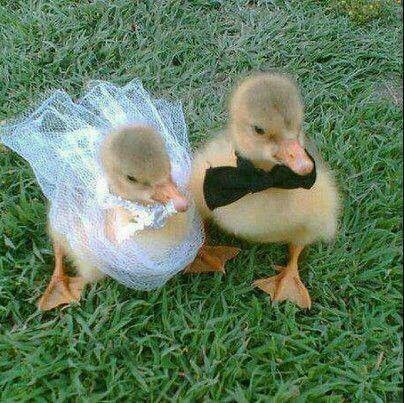 Stay with them until they venture onto the water. Don’t try and hustle them onto the water. At first they will be afraid; let them make their own way. This may take a few hours, so leave the day free so you can ensure they have settled onto the water.
Stay with them until they venture onto the water. Don’t try and hustle them onto the water. At first they will be afraid; let them make their own way. This may take a few hours, so leave the day free so you can ensure they have settled onto the water.
Go back to the same spot every day at the same time, for as long as you can, to bring them wheat. Wherever you decide to release the ducks, make sure you pre-plan it. Talk to the park supervisors, rangers or land owners first so they know what you are doing. Make sure you will be able to check on them every day for a few weeks.
Do as much research as possible into release options early on. If you live within ¼ or ½ mile of a water source and are not in a built up area, let the mallards go from where you are raising them when they are ready (if you can give the time to look after them for a couple of months longer).
Flight
When their flight feathers develop they will start to practice flying and will take little test flights.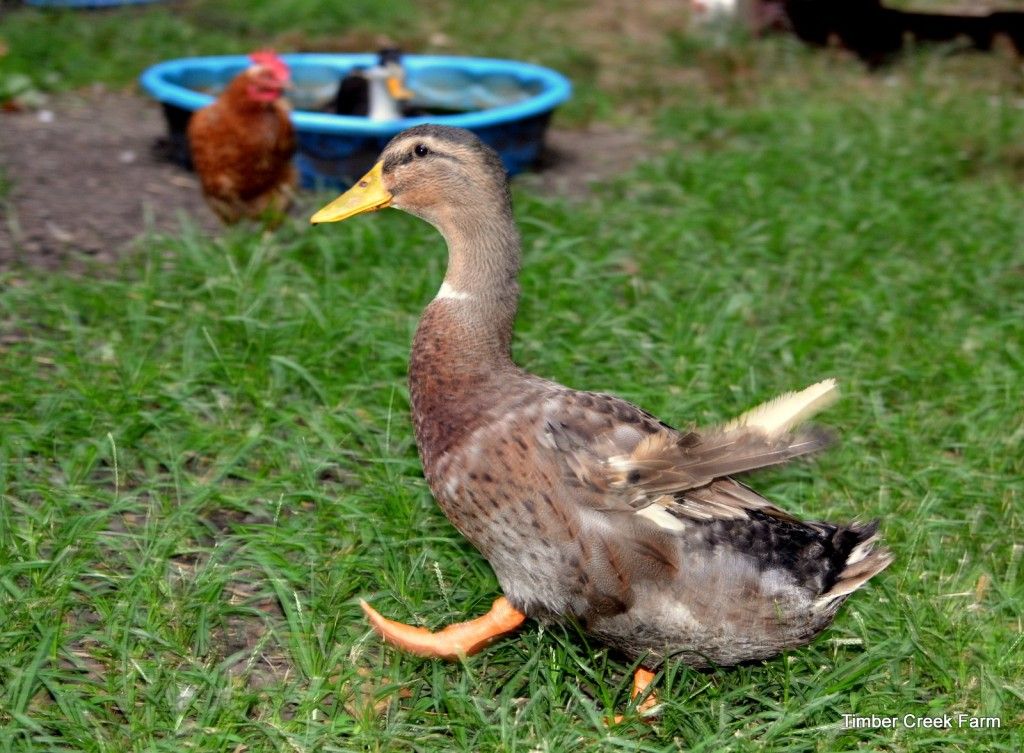 They will fly very short distances at first and return home.
They will fly very short distances at first and return home.
As they get stronger, they will fly higher and at this point they will be able to get a ‘birds eye view’ of their surrounding landscape. They will at some point go and investigate water sources.
It is likely they will keep coming home for a few weeks, then they may stay away over night, (usually during a full moon). Mallards usually take flight at dusk and dawn. They will appreciate food when they return home, but may stay away for longer and longer periods of time.
If you are lucky enough to have a pond on your garden, the mallards may decide to stay and become resident, in which case be prepared for more ducklings the next year!
Wing clipping
Do not ever clip the wings of a wild mallard, nor keep it enclosed after it can fly to ‘try and keep it safe’. Although quite used to humans in lots of areas, mallards are still wild birds. Flight is an essential part of their life.
Unless there are exceptional circumstances and the duck is disabled in some way, ALWAYS give mallards the option of flight, even though some may never fly further than the end of your garden.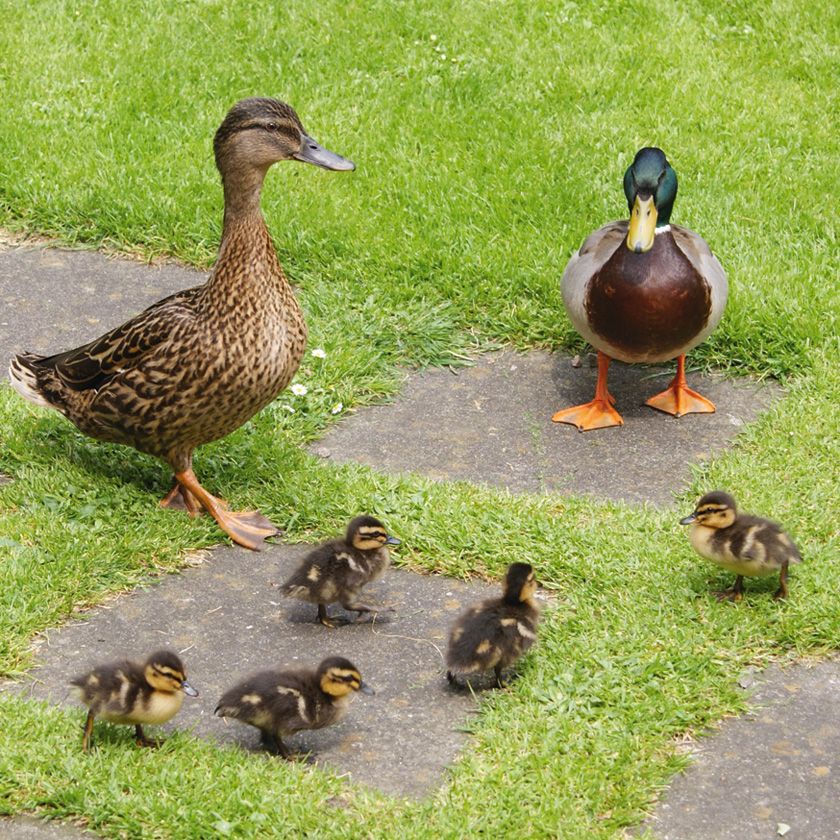
Release is both the saddest and the happiest of experiences. Watching rescued mallard ducks you have raised, fly away, is a privilege few people get to experience.
Legal considerations (UK)
When you come across any abandoned or injured wildlife you need to be aware of legal considerations. Without going into detail you must never take an animal from the wild unless you are 100% sure it is injured, abandoned or orphaned.
Ducklings often get separated from their parents and are often on ponds or grass alone. Their mum may not be anywhere in sight. Leave them alone unless:
- Injured
- Cold and wet
- Out of water / sinking in water
- Being attacked or is in imminent danger
- Found in an isolated area with no other ducks around
If you are concerned please try and watch it for at least 2 hours before you remove it. A ducking should look fluffy, rather than wet and slick.
Once you have them, you must go to reasonable lengths to get them professional care at either a vets or a wildlife rescue organisation.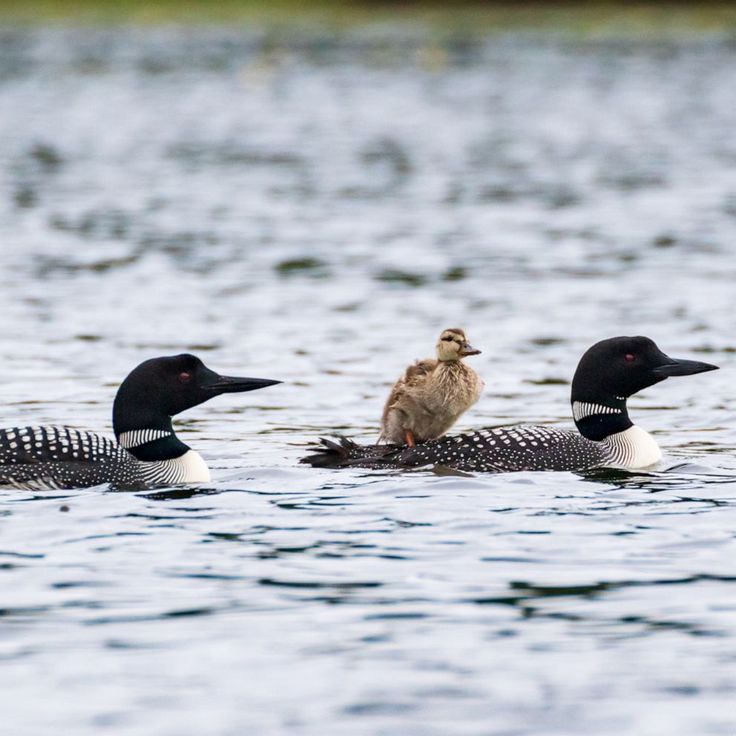 You must not release a duckling back into the wild until it is able to survive on its own.
You must not release a duckling back into the wild until it is able to survive on its own.
If the duckling is on private land try and seek permission from the land owner.
Sexing Mallards
Mallards all have the same plumage until about 7-9 months old when the drakes develop colourful feathers. You can tell their sex from about 8 weeks old by their voice.
The drakes have a nasal ‘raab’ sound, and the females have the more traditional quack. Drakes also tend to develop a greenish hue with black to their bills, while females are more orange/yellow with black.
Are you interested in seeing photos of the many breeds of domestic ducks? Then check out our Duck Breeds photo page.
There are also many other articles about keeping ducks in this section, including our Beginners Guide to Keeping Ducks.
I hope you found this guide on how to care for wild baby ducks useful. Please leave a comment below and tell me how you got on!
What To Do If You Found A Baby Duck.

- Share
- Tweet
You found some abandoned ducklings or you found a baby duck. Now, What Do You Do?
I get asked this question a lot. And it’s not a simple answer. Depending on where you live, and what kind of duck it is, it may or may not be legal for you to keep it. Read on for what you should do if you found a baby duck.
This post may contain affiliate links. Please read my disclosure if you have questions.
Thank you for supporting this site with purchases made through links in this post. For Starters Here’s My Amazon Link
Table of Contents
Orphaned Duckling.A few years ago, I got a call from my daughter. She said she had gotten a call from a friend asking her to take some orphaned Muscovy ducklings to the wildlife rehabilitation center. (the mother had been hit by a car)
My daughter was glad to help. But when she got to the center, she was told that because it wasn’t a native animal, (Muscovy’s have migrated from South and Central America) they would not take them.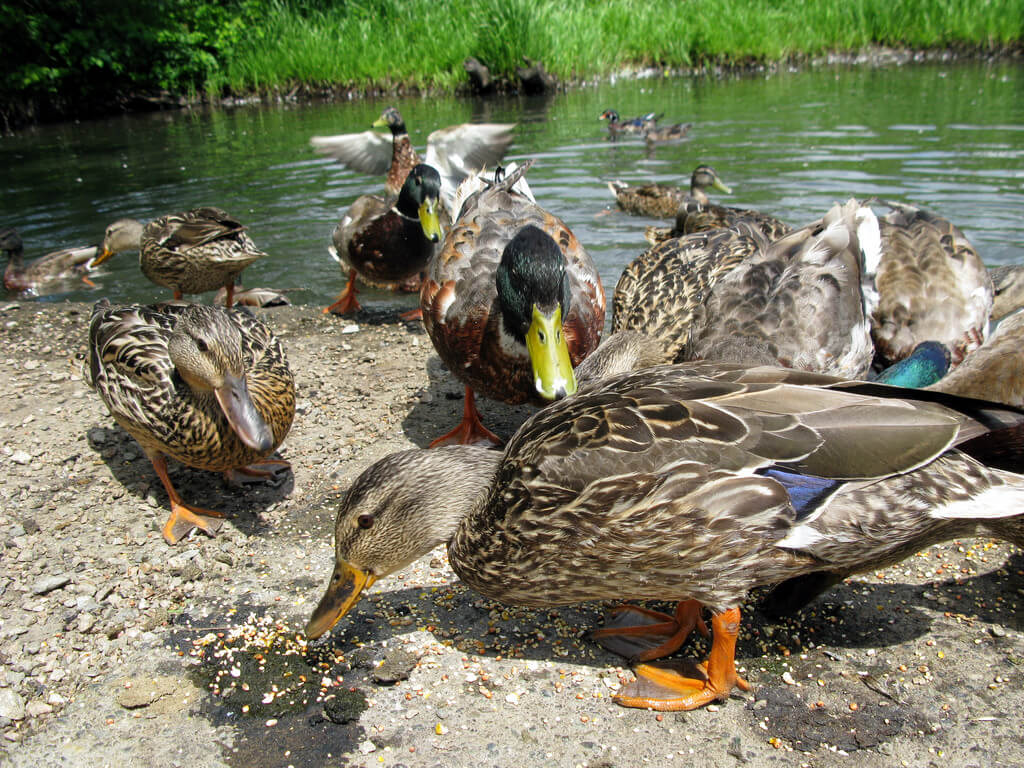
So, I got THE call. “Mom, can I keep them?” Yes, she actually said that. So, she brought them home and we started on this journey of raising ducks.
Please understand that just because I did it, doesn’t mean it is always legal to do. In fact, that is why if you find a baby duck, the first step should be to call the rehab center to make sure what you are doing is legal. Here in the U.S., it is not legal to keep migratory waterfowl. However, Muscovy’s seem to fall through the cracks, and try as we might, no one wanted to give me a straight answer about keeping them, but no one wanted to take them either.
So, if this happens to you. Do your due diligence and see what the rules and laws are in your state or country before you decide to raise an abandoned duckling….or 8, like we did.
I Found a baby duck. Now what?If you happen to find abandoned ducklings, if at all possible, just observe them for a while. If the mother is in earshot, she will return if she is able to.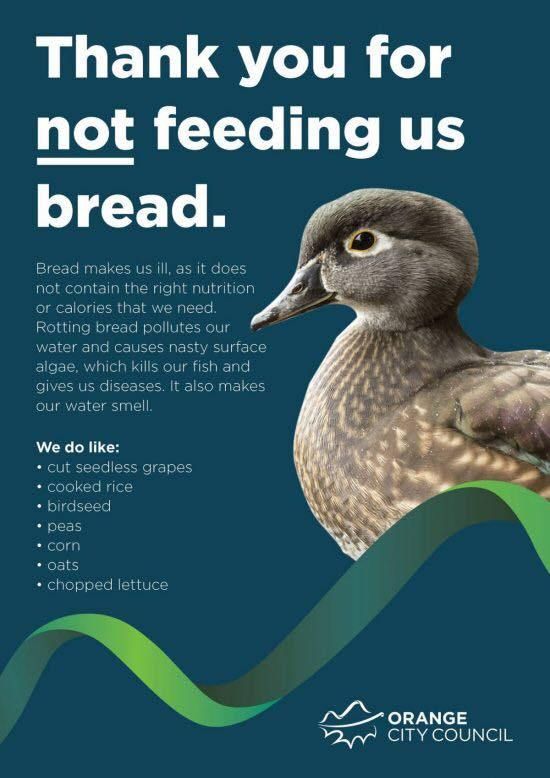 Keep your distance or she may be scared off and not return. If she does not come back, or you know she is dead, and only then, you can act.
Keep your distance or she may be scared off and not return. If she does not come back, or you know she is dead, and only then, you can act.
Call a wildlife rehabilitation center and find out what they want you to do.
Can Abandoned Ducklings Survive Without Their Mothers?
Generally, a baby duck will only survive alone for a day or two.
Since a duckling cannot survive on its own without warmth and protection from predators, the first priority is to keep it warm. Very young ducklings cannot regulate their own temperature because it does not yet have its adult feathers. A heating pad will often work well to keep your duckling warm for the short term.
Remember, however, you will likely terrify the duckling as you look like a huge predator. So be gentle and speak softly. Handle it carefully as its legs and internal organs are very delicate.
Putting the baby duck in a cardboard box with an old towel in the bottom will make transport easier. It will also help contain the mess as ducklings can poop more than you would ever imagine.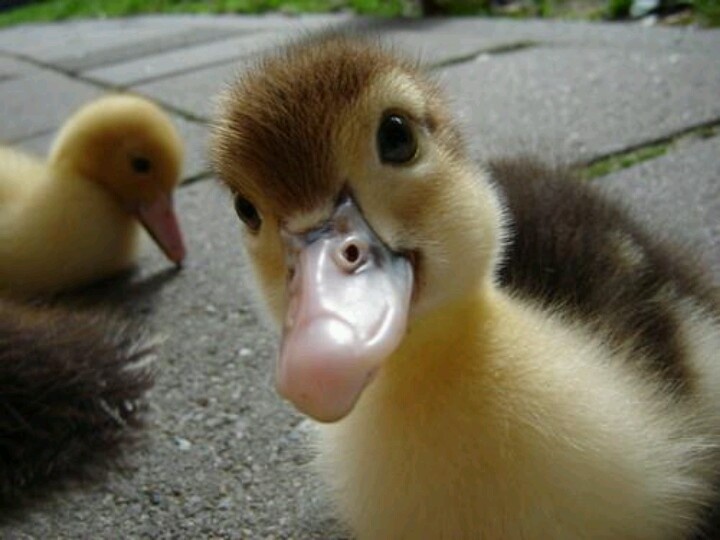
The next need the duckling has is for water. Dip its bill into a dish of water and then set him down beside it, to see if he needs to drink. Don’t try to force him to drink and don’t put him in the water so he can swim. That will just make him colder. Swimming is not a necessity for ducklings. Drinking water is.
If the rehabilitation center or wildlife official will not take it or tells you that you can keep it, then there is one more hurdle you must cross.
What’s The Best Duck For You?Sign up for my newsletter and learn more about backyard homesteading, gardening, raising ducks, and a whole lot more. And Get This FREE Duck Breeds Guide And Find Out Which Duck Is Best For You.
Know The Local Law Too.Many cities and suburbs have laws against raising chickens and ducks. Don’t assume. Check it out so you don’t get a fine or have to rehome on very short notice.
And don’t neglect to ask your neighbors if they live close to you.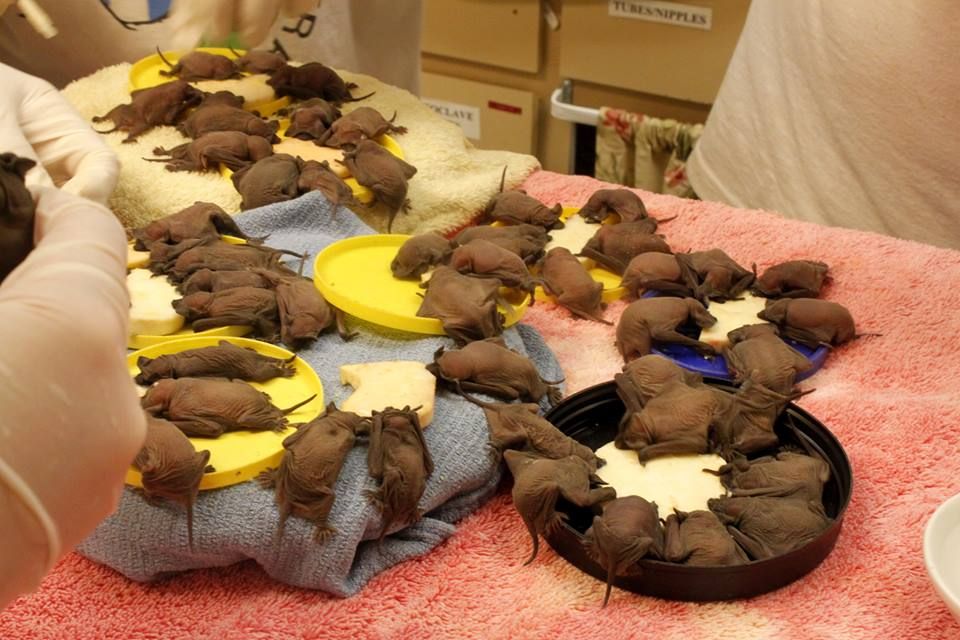 A little forewarning (and the promise of some free eggs) goes a long way to make peace with the neighbors. If they know ahead of time, they are much less likely to complain.
A little forewarning (and the promise of some free eggs) goes a long way to make peace with the neighbors. If they know ahead of time, they are much less likely to complain.
If this checks out too…
Congratulations You Are A New Duck Mommy Or Daddy.From here on out, I’m assuming you have checked with the wild animal rehabilitation center and it is legal for you to keep your new abandoned ducklings.
Please understand, wild animals that are raised in captivity rarely survive in the wild. Without a mother to teach them they don’t learn the lessons of how to survive. So, if you are going to rescue ducks, plan on keeping them permanently.
Caring For Abandoned Ducklings.Ducklings grow quickly, but in the first few weeks, they need a lot of care.
For the first night or two, until you get all the needed equipment, this is what will suffice.
- A heating pad to keep them warm if it is below 75°F
- A box, tote, or spare bathtub to keep them in.
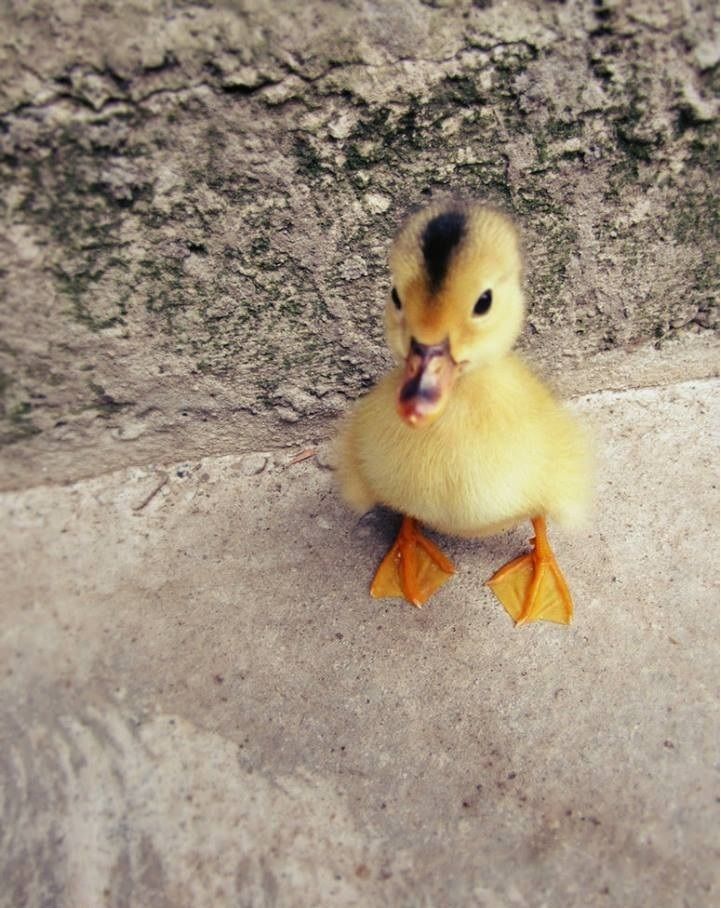
- A shallow water dish. Add a little sugar to give it an energy boost.
- A shallow food dish.
- Emergency Food – For the first few nights you can feed moistened oatmeal or cat food, and you may add some finely chopped salad or herbs. Cooled Scrambled egg is a good option too.
- A safe, quiet place, far away from family pets and small children.
- If it is a single duckling, you may want to consider buying it a buddy. Ducks are prey animals and feel more secure in a group. In fact, they will get very stressed out without one.
Rescuing Ducklings
A few years later an animal rescue place, who knew I had ducks, called me and asked if I wanted to rescue another. Someone had found a baby duck and brought it in to them. It had been abandoned in a parking lot and was scared half to death.
I took the tiny orphaned duckling in and set it all up for the night. He cried all-night-long.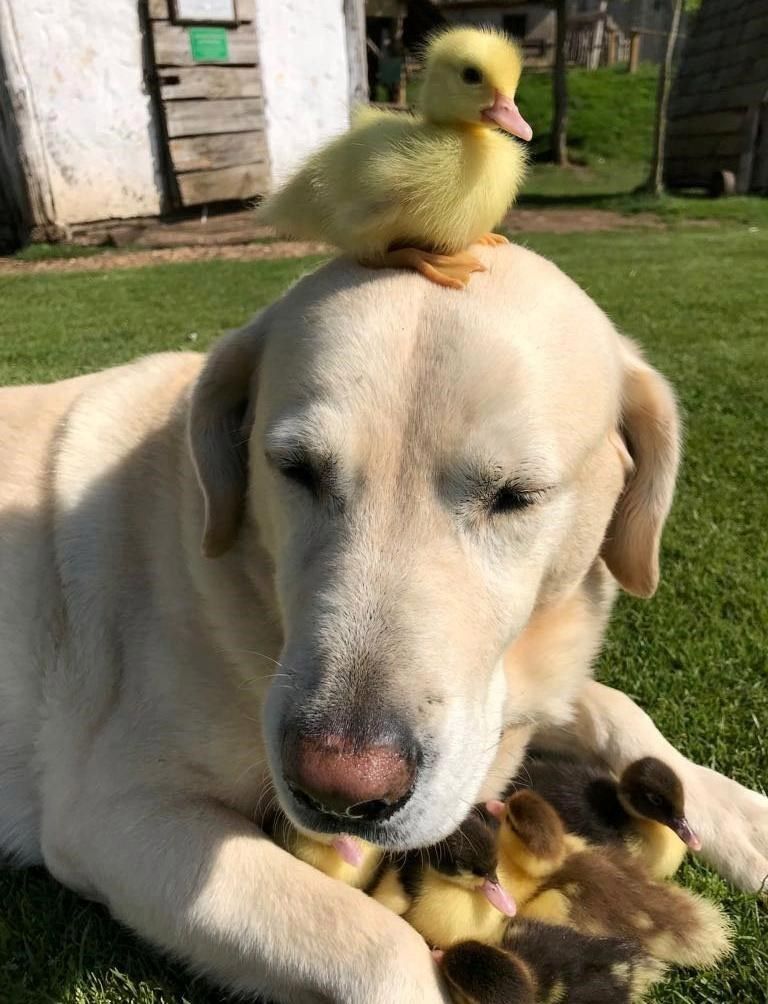 My daughter said he was singing a solo. It stuck and he was dubbed “Solo, AKA, Hans Solo” I couldn’t let him suffer like that so the next day I went down and purchased a buddy for him. “Chewy”, (yes, Chewbacca) became one of my favorite ducks and my little Solo grew up to be the drake that sired many broods of ducklings.
My daughter said he was singing a solo. It stuck and he was dubbed “Solo, AKA, Hans Solo” I couldn’t let him suffer like that so the next day I went down and purchased a buddy for him. “Chewy”, (yes, Chewbacca) became one of my favorite ducks and my little Solo grew up to be the drake that sired many broods of ducklings.
You have your ducklings safe for the night. Now what?
You are now the mommy or daddy so you have to provide all that a growing duckling needs to grow strong, healthy, and happy. Here are the things you will need.
Brooder – A brooder is simply a place in which to raise your ducklings. There are many things you can use from a bathtub to a Rubbermaid tote or purchase an all-in-one brooder. You will need at least 2 sq ft per duckling. They will need to be in it for 6-8 weeks.
Bedding – Non-slip, easy to change, and/or clean.
Temperature control – A heating pad will only work in a pinch. (and they will probably ruin it) Get a heat plate if at all possible.
Food and Water – I already mentioned the food and water bowl. Please read “What To Feed Ducklings” for all the important information on their special nutritional requirements. Ducks of all ages MUST have water at all times that they have food. They choke easily without water to wash food down.
Cackle Hatchery has many of the supplies you will need.
Ducklings don’t need swimming water.Ducklings are fun to watch swimming and they love it, but they can drown very easily and get chilled quickly. Their mothers will smear them with oils that help to waterproof them. (though, ducks of all ages can tire and drown if they can’t get out of the water) And a mother duck would be there to warm them.
If you provide them with swimming water, make sure you dry them and put them under a heat source to warm back up.
Setting Up A Duck CoopWhen you have found a baby duck (or 8) and decide to keep them. Don’t wait to get a coop. These little guys grow fast and will be all grown up and needing more space before you know it. (and you will be ready to get them outside.)
Related: 10 Necessities To A Perfect Duck House.
What If Your Duckling Doesn’t Make it?If you have found a baby duck, and you have done everything right, but your new orphaned duckling fails to thrive or dies, don’t blame yourself. Often animals will abandon their young if there is something wrong with them. Sad as it is, this is just the way of nature, and most of the time there is no way of your knowing that something was wrong. And probably nothing you could have done about it anyway.
If you have kept it warm and provided it with water and food, then you have done all you could do for the little one.
If you enjoyed this article, read more about raising ducks on the homestead.
Did you like this post? Then, I’d love it if you’d share it!
Want some more top posts? Check out this list of Readers Favorites.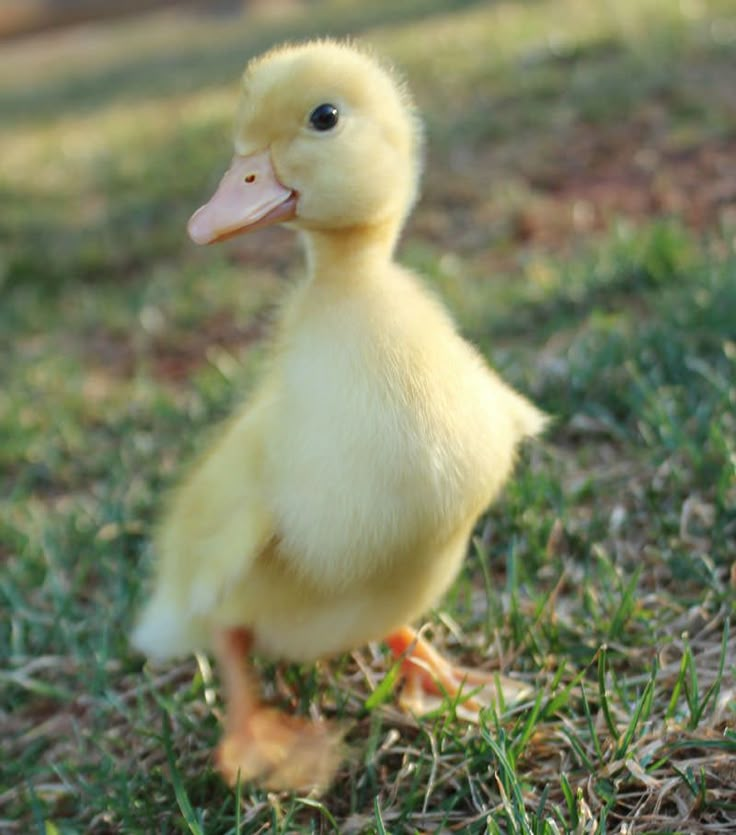
Happy Gardening!
I believe everyone can grow at least part of their own food! Let me show you how.
- Share
- Tweet
How to feed ducklings - compiling a daily ration
Raising ducks at home is a solution to many issues regarding the provision of eggs, meat and many other by-products. The quality of the resulting young animals directly depends on how correctly the living conditions were formed for it. A very important question: what to feed the ducklings? Without a selection of answers to it, it is better not to start a conversation about a poultry plant. The growth activity of the young and its productivity in the future will directly depend on how correctly the ingredients of the bird's diet are selected.
Content
- 1 On feeding ducklings
- 2 Composition of feed
- 3 Peculiarities of fattening ducklings
- 4 videos “Content and feeding of young ducks”
On feeding ducklings
The question of how to feed ducklings, very much is relevant as duck raising is becoming more and more popular due to the fact that the weight gain of these young birds is much greater in comparison with other representatives of poultry.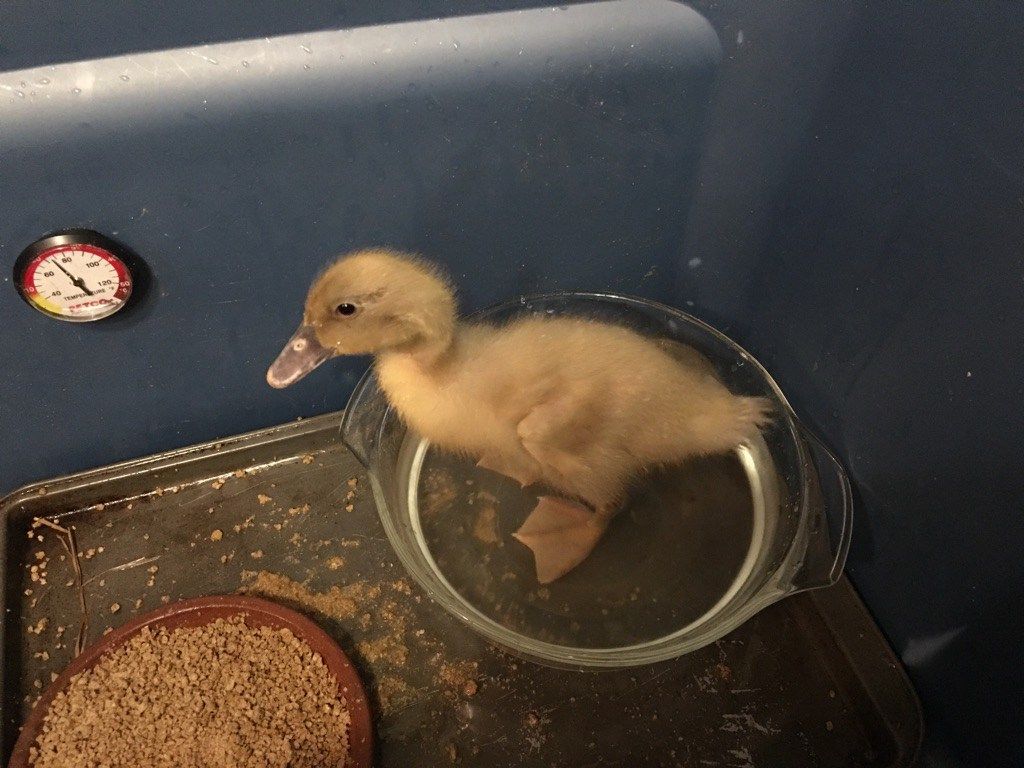 If the duckling feels a lack of certain nutrients, vitamins or trace elements, then in most cases the body fades, which reduces immunity and resistance to even the weakest viruses and infections disappears. It is very important to provide the bird with proper care. Naturally, if you don’t figure out what to feed the ducklings in time, then you can’t count on a quality gain at all.
If the duckling feels a lack of certain nutrients, vitamins or trace elements, then in most cases the body fades, which reduces immunity and resistance to even the weakest viruses and infections disappears. It is very important to provide the bird with proper care. Naturally, if you don’t figure out what to feed the ducklings in time, then you can’t count on a quality gain at all.
The feeding process involves some adaptation of the young animals to the consumption of large amounts of food. That is why it is very important to constantly keep under control the fattening of ducklings - before each meal, check their esophagus. If it is hard, then the food has not yet entered the stomach. It will be correct to wait for digestion before giving the next portion.
But the above is not all the problems that are caused by the lack of certain nutrients in the feed. When the duckling feels hungry, he begins to swallow the litter, which can cause injury. That is why knowing how and what to feed little ducklings will help to avoid a huge amount of trouble.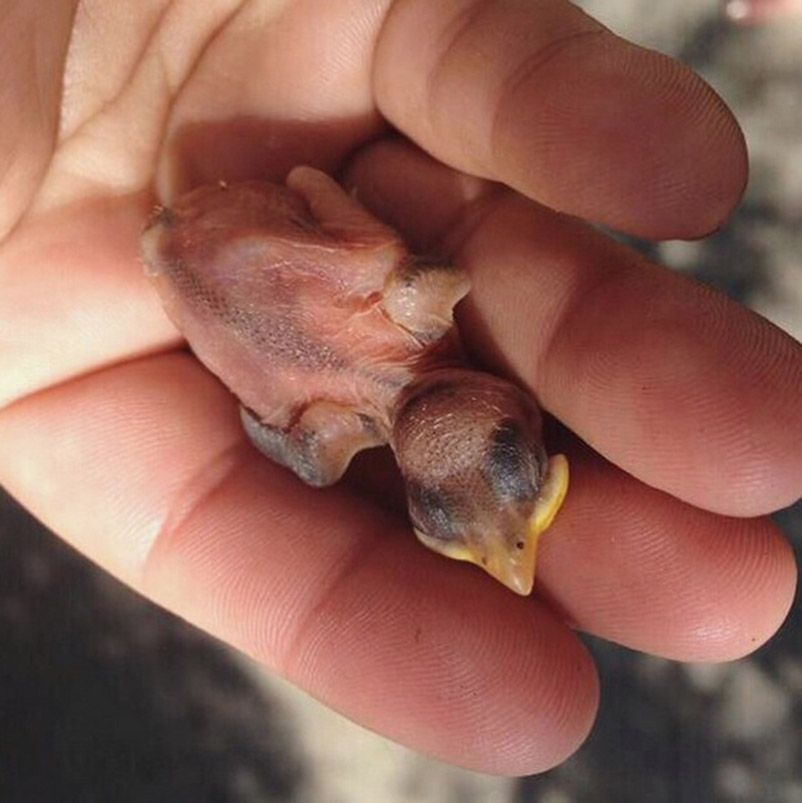 If the rules for feeding ducklings are fully observed, this will make it possible to increase the weight of the young by eighteen times already in the first month.
If the rules for feeding ducklings are fully observed, this will make it possible to increase the weight of the young by eighteen times already in the first month.
Food composition
Hard-boiled duck and chicken eggs are an excellent basis for feeding ducklings in their first stage of life. Eggs should be carefully crushed and placed in small troughs. It is better not to neglect the last condition, so that in the end the food does not mix with the bedding. If there are no feeders, then you can feed from a sheet of thick paper, which will need to be updated as it wears. In addition to eggs, feeding ducklings involves the use of a large amount of liquid - not only water, but also warm milk. Adding milk to food helps to quickly strengthen the immune system. A weak solution of potassium permanganate can also be used as a disinfectant.
The duckling grows very fast, so if you plan to slaughter the young for meat before the first molt (at the age of two months), you need to increase feeding from a month and a half.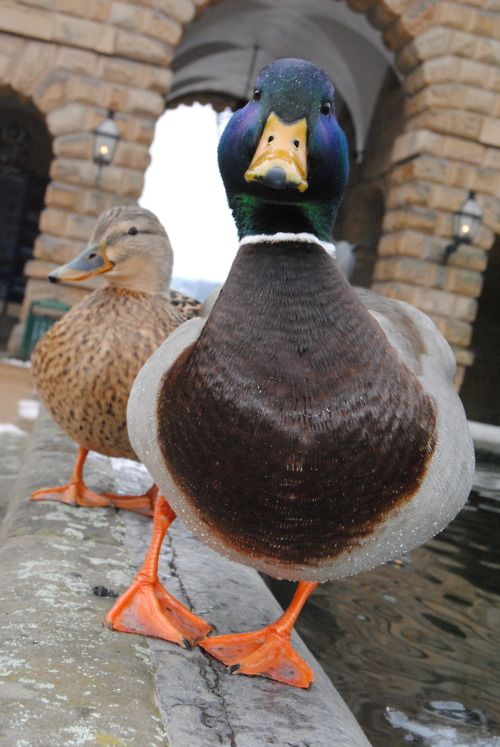 Young animals that have a paddock in a pond, in addition to the food received there, need to prepare a wet mash of grain and feed.
Young animals that have a paddock in a pond, in addition to the food received there, need to prepare a wet mash of grain and feed.
How much compound feed to mix? Usually use a 50/50 ratio with the rest of the products in the composition. In no case should you use compound feed for ducklings, which was originally intended for cattle. The fact is that urea is added to such compound feed, which is contraindicated for ducks.
Despite the amount of algae that a duckling can eat in a pond for the whole day, and usually it is about two hundred grams, it is better to add chopped greens, chopped and boiled root crops to the prepared mash. The presence of greenery in feeding significantly reduces the cost of feeding poultry. In this case, the ducklings will grow much faster.
Naturally, in the absence of a reservoir on the walking area, feeding will differ, but not in composition, but in quantity. Feeders are installed on the territory of the poultry house and range, which are replenished as necessary without any restrictions.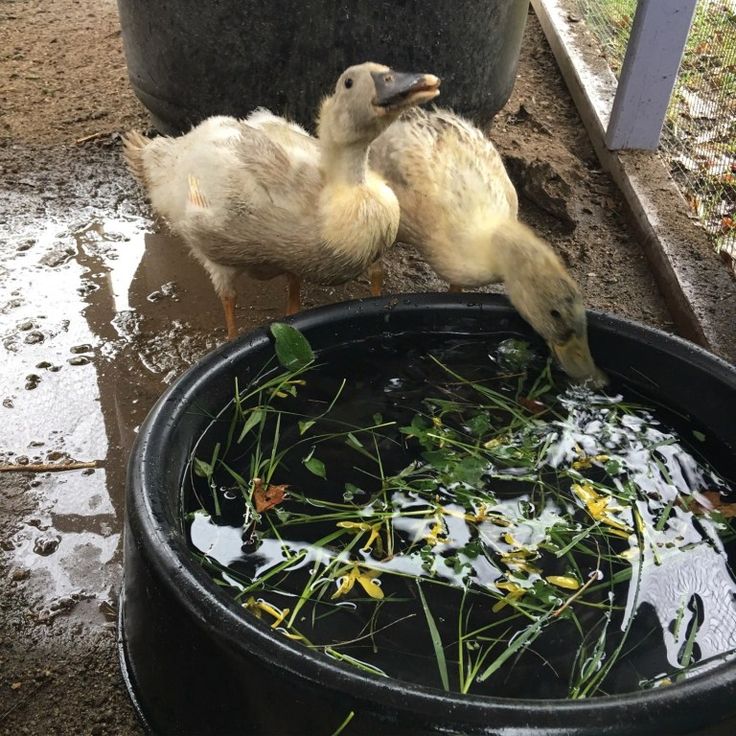 Do not forget about the drinking bowls, where the duckling can not only drink, but also swim.
Do not forget about the drinking bowls, where the duckling can not only drink, but also swim.
In the summer, wet food quickly turns sour, so you need to feed a little duckling as much food as he can eat without a trace in half an hour. After each such feeding, the feeders should be washed with hot water or an ash solution. Maintaining cleanliness is the most important condition for raising ducks to protect against various diseases.
Poultry rarely suffers from poor appetite, but if such a problem occurs, yeast feed helps. The same procedure allows you to feed ducklings with food containing an increased concentration of proteins and vitamins. To carry out yeast per kilogram of flour feed, you will need only thirty grams of fresh yeast, previously diluted in 1.5 liters of heated water. The resulting mass must be thoroughly mixed. The main condition for its storage is placement for seven hours in a warm place, after which the resulting feed can be given to the bird as part of a wet mash.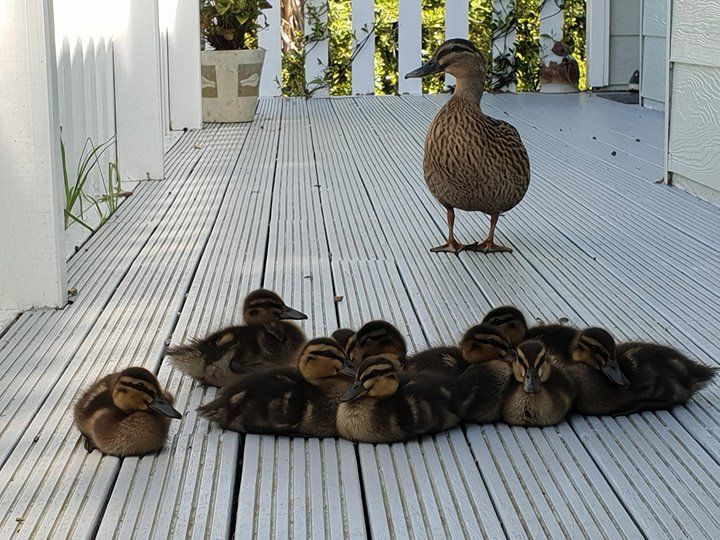
When it comes to raising ducks on a personal plot, the question of what to feed little ducklings is decided almost at once, since various household waste can be used for these purposes - tops, leaves, etc. It is enough just to chop and mix, for example, with compound feed for ducklings. Boiled potato peels, crushed meat bones, or fish waste are also often used. Naturally, these products should not be given to young animals that have barely hatched. Older individuals can be given stale bread crusts that are soaked in warm water; it can become the basis for a mash, which is the main "dish" in feeding ducklings. Any mixture of feed and compound feed for ducklings can be seasoned with seeds of wild herbs - quinoa, chicken millet and others.
A good basis for feeding ducklings is green and soft grass, which must be thoroughly dried and then chopped and steamed, after which it can be mixed into the mixture. The best conditions for drying grass are ventilated places on high ground, as in this case, after drying, the maximum amount of vitamin A, which is so important for the growth of poultry, will remain in the hay.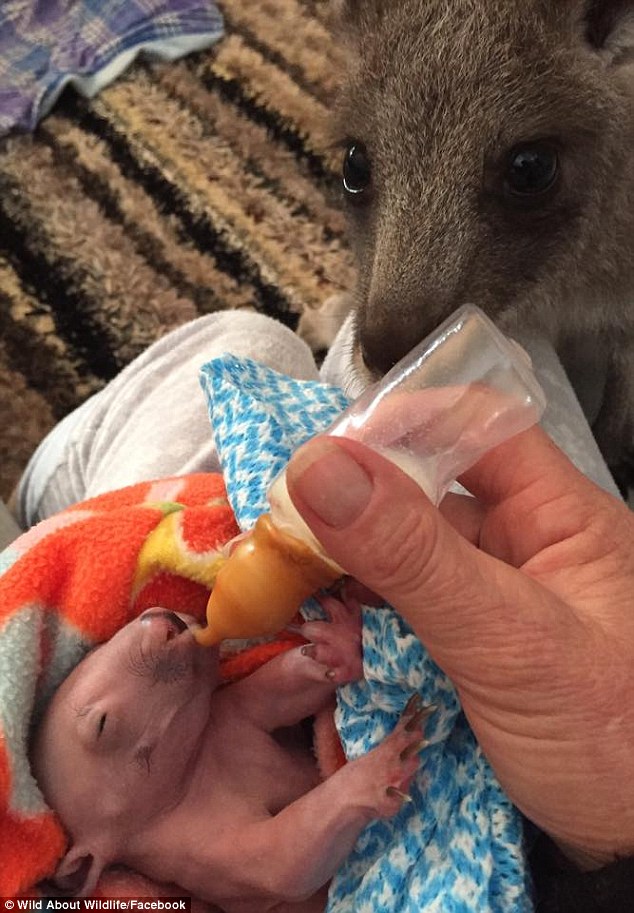 Do not throw away the hay dust, as it has a lot of nutrients.
Do not throw away the hay dust, as it has a lot of nutrients.
Peculiarities of fattening ducklings
There should not be any difficulties in feeding ducklings properly, as these “young” are hardy and not susceptible to many diseases that harm other poultry. There is usually no need to use medications to promote growth. It is better to exclude even officially recognized supplements from the diet so as not to feed the chicks with chemicals. Yes, and the improper use of one or another drug can harm ducklings, even such a resistant breed as broilers - Star 53, etc.
Young animals can be allowed to eat green fodder only at the end of spring, it is better to do it outdoors. The duckling gets the best care if it has the opportunity to be in grassy clearings. During bad weather, babies can receive grass cuts directly to the house.
All domestic ducks left for the winter must be provided with nutritious food in cold weather. To feed one individual all winter, you will need about thirteen kilograms of potatoes, ten kilograms of root crops, eight kilograms of hay, twelve kilograms of bedding, six hundred grams of fine granular sand, and one kilogram of compound feed for ducklings or any other mineral feed.
A duckling reaches the weight required for slaughter already at the age of nine weeks, but only on condition that it has been provided with proper care and nutrition. Having consumed ten kilograms of feed, a Peking duck will weigh about three kilograms. Muscovy ducks will have to be fed a little longer.
Video “Keeping and feeding young ducks”
In the video you will see the conditions under which ducks are kept in a private backyard.
types of feed, diet and norms
For normal development and rapid weight gain, ducklings need to receive high-calorie balanced feed from the first days of life that meets the needs of age and direction.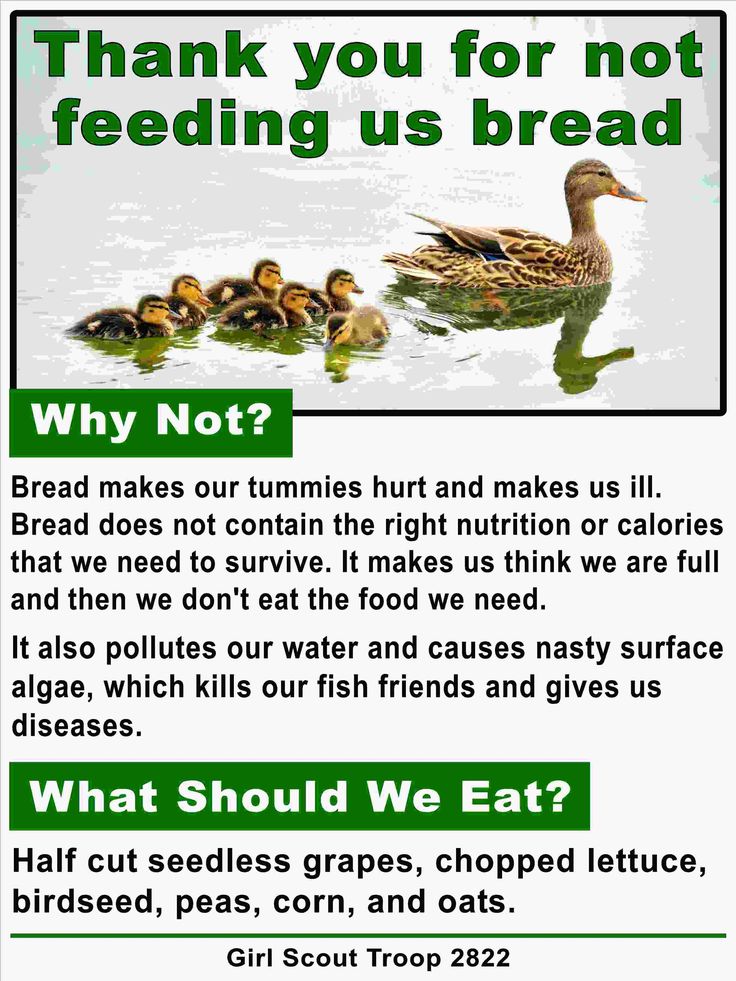 Health, survival, livestock productivity and, accordingly, the profitability of the economy primarily depend on the proper nutrition of birds. Thanks to a well-designed diet and feeding regimen for ducks, it is possible to improve the quality of the final product and reduce veterinary costs, both at a large poultry farm and at home.
Health, survival, livestock productivity and, accordingly, the profitability of the economy primarily depend on the proper nutrition of birds. Thanks to a well-designed diet and feeding regimen for ducks, it is possible to improve the quality of the final product and reduce veterinary costs, both at a large poultry farm and at home.
- What foods are good for ducks?
- Benefits of feeding ducks with specialized feed
- Features of the spring-summer diet
- Nuances of feeding in winter
- Prohibited products
- Norms and diet of ducks of various ages
- Benefits of compound feed for ducks produced by MEGAMIX Group of Companies
What foods are good for ducks?
| Cereals are the main component of feed mixtures. They contain a lot of proteins, carbohydrates, vitamins and fiber necessary for good growth and muscle gain. |
|
| Legumes are a high-calorie source of protein |
|
| Juicy feed enriches the diet of ducks with vitamins, stimulates appetite |
|
| Animal products are necessary for the normal development of the bird's body, rapid weight gain or increase in egg production. |
|
| Minerals are important for good food digestion and egg formation. |
|
Benefits of feeding ducks specialty feeds
High-quality ready mixes are biologically safe and balanced.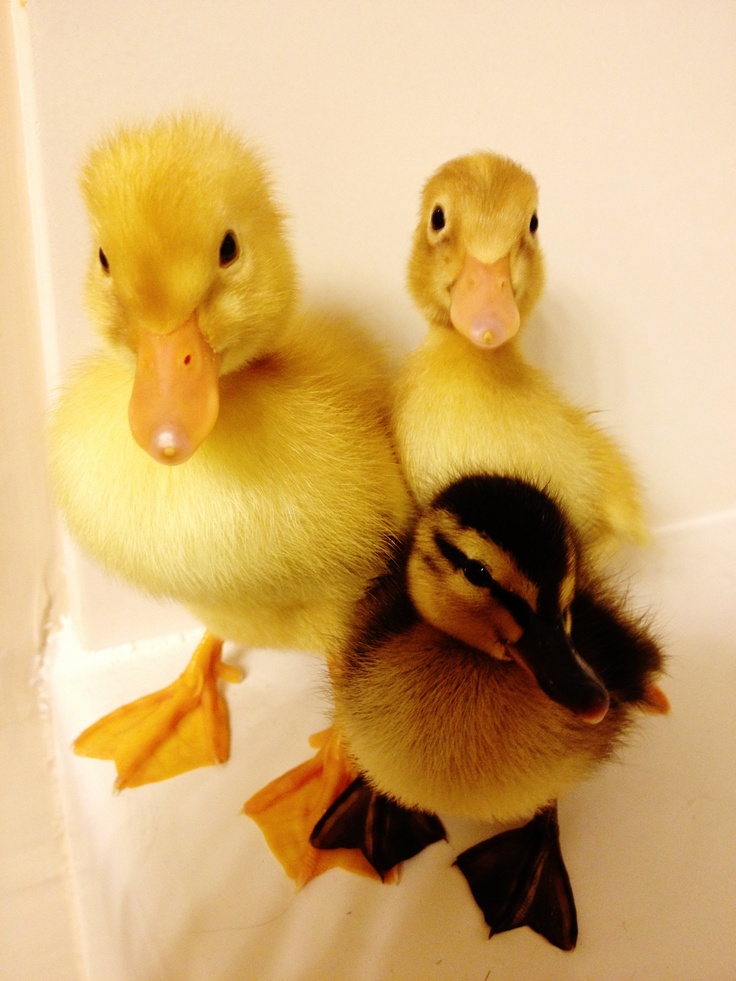 They are made from natural components of plant and animal origin, which has passed multiple tests. They use the most digestible grains as the main ingredients. Starter mixtures can be additionally enriched with pure amino acids obtained in the laboratory.
They are made from natural components of plant and animal origin, which has passed multiple tests. They use the most digestible grains as the main ingredients. Starter mixtures can be additionally enriched with pure amino acids obtained in the laboratory.
Ready mixed feeds and meet the age needs of birds. In the production process, they undergo short-term heat treatment, which destroys harmful microorganisms, but does not have time to destroy useful substances. The use of purchased compound feed simplifies the care of ducks and frees the poultry house from additional work on the preparation of mash.
Features of the spring-summer diet
During this period, the chicks are actively growing and gaining weight. If the breeder specializes in meat breeds, then feeding is limited only to the spring-summer season. In large farms, where birds do not have the opportunity to walk, ducks are given compound feed 4 times a day. For home breeding, summer is also the best period.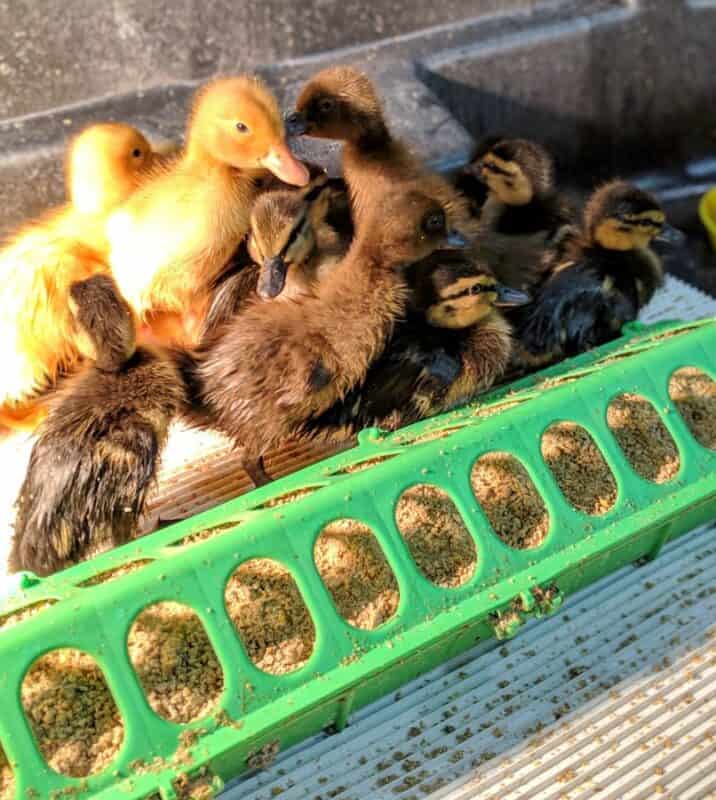 On small farms or in subsidiary farms, wet mashes are usually alternated with a mixture of cereals and fresh herbs, and concentrated mixtures are used instead of complete feed to enrich the diet.
On small farms or in subsidiary farms, wet mashes are usually alternated with a mixture of cereals and fresh herbs, and concentrated mixtures are used instead of complete feed to enrich the diet.
In duck breeding, the cultivation of birds in water bodies is used, however, such conditions are not suitable for all breeds. The advantages of the method are that ducks independently extract all the necessary nutrients. However, to gain weight, they need to additionally give high-calorie feed. Because of this, the fattening time can increase up to 4-6 months. instead of 2.5. However, as a result, the breeder receives lean, juicy meat with excellent taste.
Nuances of feeding in winter
In egg breeds, the diet during the cold season changes significantly. The amount of succulent fodder and greens is reduced. Instead, the proportion of meat and bone and fish meal, dried hay, and boiled vegetables is increasing. Ducks need to be fed only twice a day: in the morning and in the evening.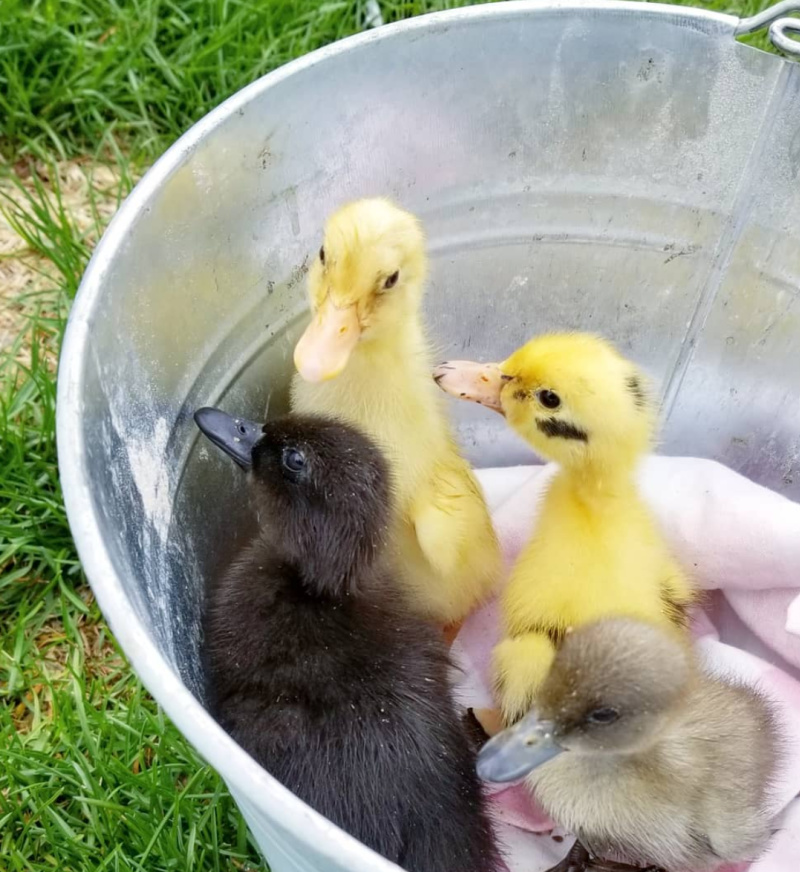 The main volume is made up of grain mixtures, wet mixers. To compensate for the deficiency of proteins, vitamins and calcium, special premixes or protein-vitamin-mineral complexes are used.
The main volume is made up of grain mixtures, wet mixers. To compensate for the deficiency of proteins, vitamins and calcium, special premixes or protein-vitamin-mineral complexes are used.
In winter, it is important to ensure that egg breed ducks receive enough calories, but do not gain excess weight, since obesity leads to a decrease in productivity.
Prohibited products
Despite the fact that ducks are almost omnivores, some foods can harm them. It is not recommended to give the bird:
- Moldy feed. Mycotoxin poisoning can lead to serious consequences.
- Fine flour. It can clog the nose and swell in the stomach, causing a false feeling of fullness. As a result, ducks receive less nutrients, eat less feed, and gain weight worse.
- Bread. Such food causes dysbacteriosis and upset of the gastrointestinal tract in the bird's body. Only crackers in small quantities are allowed.
- Fresh milk. In the stomach, it is not absorbed, but folds, causing indigestion.
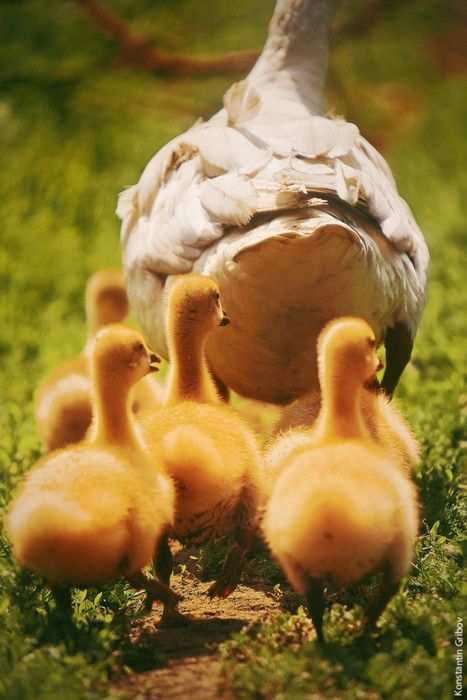
- Poisonous herbs for ducks: celandine, cocklebur, henbane, poisonous milestone, maple leaves, etc. When chopping fresh herbs, you need to carefully check all the plants.
- Fresh nettle. Untreated stems and leaves can burn the walls of the stomach and lead to irritation of the gastrointestinal tract.
- Cucurbitaceae, in particular cucumber and marrow. Their excessive use provokes the excretion of calcium.
- Vegetable and fruit peelings. They are too dense and hard to digest.
Norms and diet for ducks of different ages
Calorie and nutrient requirements change in chicks as they grow. When choosing feed for ducks, you should pay attention to its labeling and composition.
In the period up to 4 weeks, the digestive system of the chicks is still not sufficiently formed, easily digestible proteins predominate in the feed. Enzymes are added to the feed mixture to improve digestion. The diet of ducklings is enriched with organic acids, vitamins, macro- and microelements, which are responsible for the formation of a strong skeleton and the normal development of internal organs. Since the immunity of chicks is weaker than that of adult ducks, coccidiostatics are added to the starting compositions. These substances destroy pathogens and prevent the massive spread of coccidiosis among young animals.
Since the immunity of chicks is weaker than that of adult ducks, coccidiostatics are added to the starting compositions. These substances destroy pathogens and prevent the massive spread of coccidiosis among young animals.
In the finishing phase (4-8 weeks), ducks require less protein. The protein content in the feed is reduced, but the amount of carbohydrates and fiber is increased so that the bird gains weight faster. Laying ducks require specialized feed. It contains antioxidants that increase the productive period of birds and improve the palatability of eggs.
The feeding schedule is developed taking into account the age of the bird, the season, the size of the livestock and the characteristics of a particular breed. Violation of the recommended regimen can provoke gastrointestinal diseases and blockage of the goiter. In the starter phase, food is given frequently, but in small portions. As the ducks grow older, the dosage increases. By the finish stage, the number of feedings is gradually reduced to 2 times a day.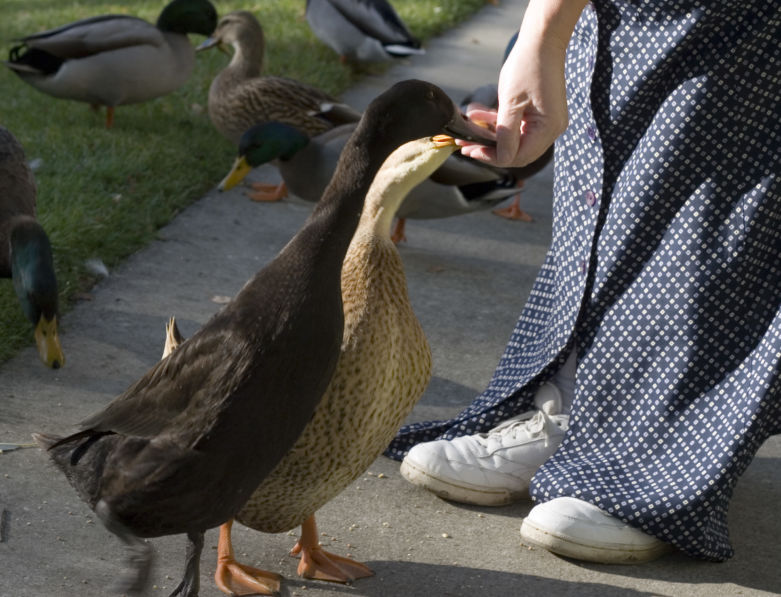
Feeding large portions increases the average daily weight gain of birds. It usually takes 2.5 months to raise ducks for meat. Birds are kept in separate pens or cages and restricted in movement so that they gain mass faster without wasting calories on movement. They are fed high-calorie mixtures containing a large amount of cereals and starch. Wet mixers are filled with whey. 2 weeks before slaughter, fish products are excluded from the diet.
During the period of active laying, ducks need to provide a varied diet with a high content of vitamins. In winter and early spring, it is useful for laying hens to give sprouted grains of oats, wheat and barley in the amount of 10–15 g. Every day, the bird needs to drink about 1 liter of water, so it is not recommended to feed it with wet mash. The diet of egg breeds should include yeast rich in B vitamins.
The MEGAMIX company produces all types of complete mixtures for ducks of various ages.
PK-21 Starter feed for ducklings from 0 to 4 weeks
PK-22 Finishing composition for young animals 4-8 weeks, accelerating weight gain
Benefits of compound feed for ducks produced by MEGAMIX Group of Companies
You can order all types of feed mixtures for ducks and geese from us.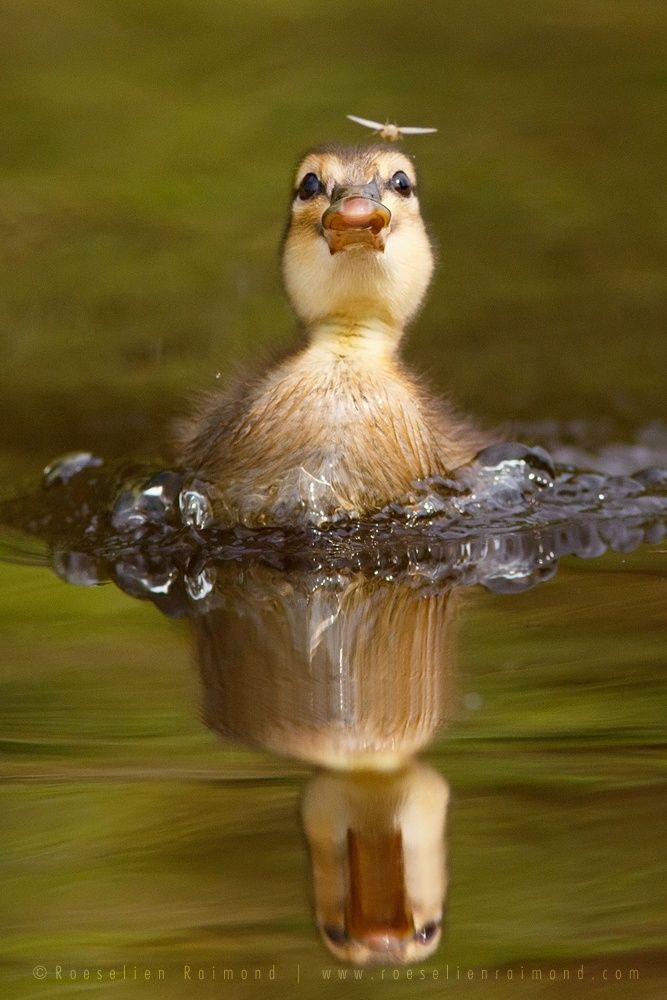

 It contains about 2-3% fiber, which improves digestion. Most carotene, necessary for the synthesis of vitamin A, is found in yellow varieties of corn. The volume of this culture in the diet of ducks can be up to 50% of the total amount of feed.
It contains about 2-3% fiber, which improves digestion. Most carotene, necessary for the synthesis of vitamin A, is found in yellow varieties of corn. The volume of this culture in the diet of ducks can be up to 50% of the total amount of feed. 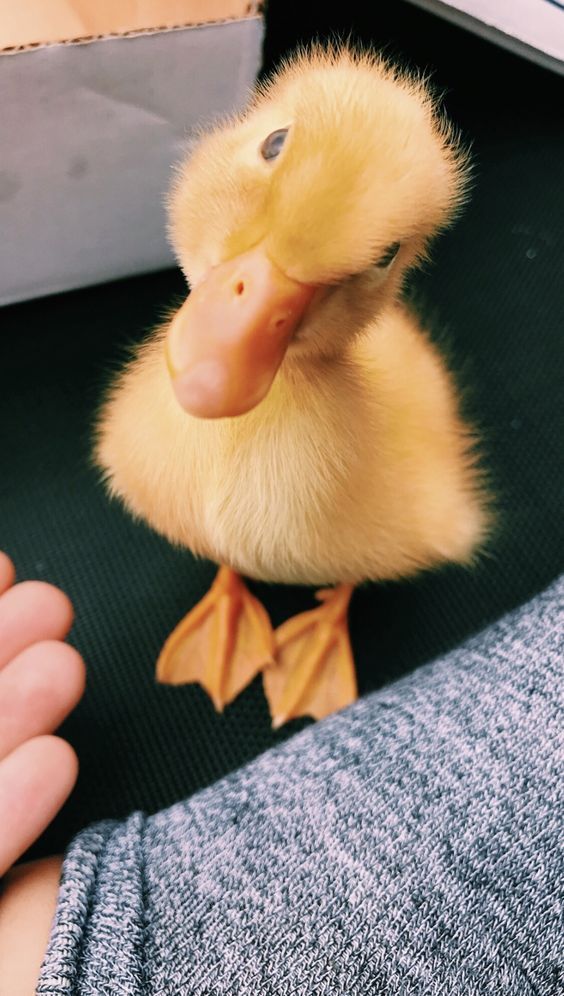 Like oats, barley has a rough skin that is difficult to digest. In feed, it is used in powdered form.
Like oats, barley has a rough skin that is difficult to digest. In feed, it is used in powdered form.  Birds with appetite eat elodea, ryama, pondweed, duckweed, etc. and well assimilate vitamins and microelements contained in plants. From the 2nd week of life, ducklings can be given no more than 15 algae per day. Adults at the fattening stage require about 50 g per day.
Birds with appetite eat elodea, ryama, pondweed, duckweed, etc. and well assimilate vitamins and microelements contained in plants. From the 2nd week of life, ducklings can be given no more than 15 algae per day. Adults at the fattening stage require about 50 g per day.  The product is recommended to be added to the feed for ducklings, starting from 5 days of age in an amount up to 5% of the total volume. In the diet of adult birds, its share increases to 10%.
The product is recommended to be added to the feed for ducklings, starting from 5 days of age in an amount up to 5% of the total volume. In the diet of adult birds, its share increases to 10%. 